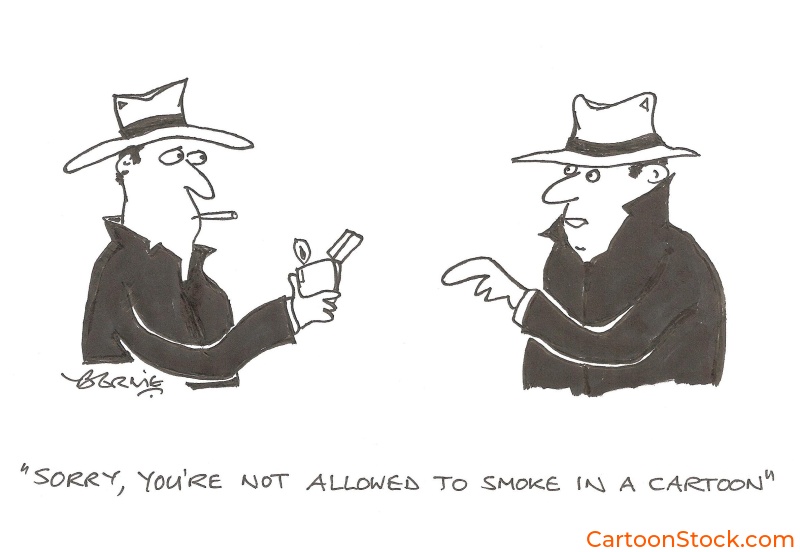The Cultural Impact of Cartoons: More Than Just Funny Pictures
Part of our History & Art of Cartoons guide →
Cartoons Aren’t Just a Laughing Matter
We often think of cartoons as simple entertainment—quick jokes, clever drawings, the funny stuff at the back of the magazine. But the cultural impact of cartoons runs much deeper than a punchline. For over a century, cartoons have reflected society’s values, questioned its assumptions, and helped shape public conversation.
Whether they’re lampooning politicians, capturing everyday absurdities, or becoming viral memes, cartoons do what few other mediums can. They distill complex ideas into single, striking images that stick with us long after we scroll past.
Cartoons as a Mirror of Society
Cartoons don’t exist in a vacuum—they live inside the culture that produces them. In doing so, they reflect the hopes, anxieties, and contradictions of their time.
For example, workplace cartoons from the 1980s poked fun at bureaucracy and office life. Parenting cartoons have followed shifts in gender roles and family dynamics. Even simple sketches about technology often reveal deeper concerns about surveillance, burnout, or distraction.
Because of this, the best cartoons hold up a mirror to society. Sometimes, what we see in that reflection is both hilarious and uncomfortably accurate.
Editorial Cartoons and Political Commentary
Few formats cut through political noise like a sharp editorial cartoon. With just a few lines and the right metaphor, cartoonists can mock kings, presidents, parties, and pundits alike.
Editorial cartoons often function as visual op-eds. They’re punchy, pointed, and unapologetically opinionated. At their best, they hold the powerful accountable, using humor to expose injustice, corruption, or hypocrisy in ways that resonate far beyond the headlines.
While political cartoons are often tied to the news cycle, their impact can be lasting. Iconic images from wartime, elections, or protest movements remain in cultural memory long after the headlines fade.
Cartoons and Social Movements
Cartoons don’t just poke fun—they can also inspire change.
From civil rights to climate activism, cartoons have played a role in rallying support and shaping awareness. They appear on protest signs, social media posts, and posters. In each case, they act as visual shorthand for complex ideas.
Their impact is especially strong during moments of urgency. Cartoons simplify messages, connect with emotion, and spread quickly. This makes them ideal for movements that depend on visibility and shared values.
Because they transcend language, cartoons often have global reach. A bold visual from one country can resonate across borders, adding to its power and cultural significance.
The Emotional Power of Cartoons
Humor is disarming. That’s what gives cartoons such a unique emotional range. They can be laugh-out-loud funny one minute and deeply moving the next.
In times of crisis or grief, cartoons offer a surprising form of comfort. They help people connect, express emotion, and process the moment. We saw this after 9/11 and at the start of the COVID-19 pandemic. In each case, cartoons gave shape to a collective emotional response.
These moments show that cartoons don’t just entertain—they empathize.
Q&A: Cultural Impact of Cartoons
Q: Why do cartoons have cultural impact?
A: They simplify complex ideas into clear, visual messages that resonate emotionally and stick in people’s minds.
Q: Are cartoons taken seriously in academic or cultural circles?
A: Yes. Cartoons are studied in media, communication, sociology, and art history for their cultural and narrative value.
Q: Can cartoons actually influence public opinion?
A: Absolutely. Cartoons have sparked conversations, shifted perceptions, and played a role in major political and social moments.
Cartoons as Cultural Record and Catalyst
The cultural impact of cartoons lies in their dual role. They reflect the world as it is while also challenging us to imagine how it could be.
Cartoons live in our newspapers, timelines, and memories. They shape how we laugh, think, and connect with one another. So next time you share a cartoon, remember: it might be saying more than you realize.
Keep Reading
Want to explore the role of political cartooning in cultural commentary?
Read: How Editorial Cartoons Have Shaped Social Commentary Beyond Politics – coming soon
Related Posts
Cartoon Collecting: The Rise of Cartoons as Valuable Art
The Most Influential Cartoonists of All Time – Coming Soon
The Cultural History of the Single Panel Cartoon – Coming Soon
Why New Yorker Cartoons Are So Iconic (And How They’re Made) – Coming Soon


